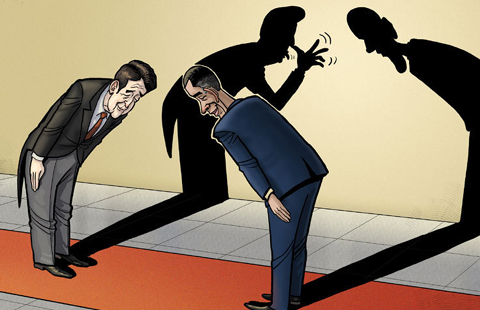Expert: Joint efforts against extremism
By Yan Shuai (China Daily) Updated: 2014-12-31 07:48
 |
|
Chinese Foreign Minister Wang Yi attends a UN Security Council summit on terrorism in New York, Sept 24, 2014. Wang Yi on Wednesday called on the international community to come up with "new thinking and new steps" in its response to terrorism. [Photo/Xinhua] |
Growing threat requires China and the US seek more common ground and develop a shared strategy in the fight against terrorism
The world is now witnessing a wave of terror threats that have never been seen before. China and the United States are no exceptions, and both are confronted with a growing terrorist threat. With this in mind, they should seek more constructive cooperation in the fight against terrorism.
Globally, after the killing of Osama bin Laden in 2011, a new era of terrorism has emerged. According to a report released on July 23, 2014, by Maplecroft, a British risk consultancy, global terrorist related deaths have risen by almost a third over the last 12 months compared to the previous five-year average. Terrorism is spreading to more countries, especially in the Middle East, South Asia and North Africa. In Syria and Iraq, the sudden rise of the Islamic State extremist group poses a global threat to the international community, al-Qaida is enjoying a resurgence due to the withdrawal of international coalition forces in Afghanistan, while Boko Haram has carried out a series of shocking attacks with significant casualties in Nigeria.
For the US, the successes of IS in Iraq and Syria have surprised Washington and disrupted the US' strategy in the Middle East. Without intervention, the gains of eight years of war in Iraq will be lost.
On Sept 10, 2014, US President Barack Obama announced a new strategy for fighting IS; increasing airstrikes against IS' targets and deployed more non-combat forces to help Iraq's government. At the same time, the US is focusing on winning over more nations to form an international anti-terror alliance. The alliance is now 60 nations strong, but after several months of airstrikes, IS has not been weakened and the US is unable to effectively control and use the anti-terror alliance to serve its aims, especially with regard Turkey, Saudi Arabia, and other Middle Eastern nations, which have different goals in fighting IS.
On the other hand, the threat IS poses to the US homeland is growing. Since the US first launched airstrikes against IS, the terror group has ramped up its propaganda campaign, releasing videos threatening to attack the West. On Sept 21 this year, IS warned of attacks inside Western nations. The spokesman for IS in the audio urged supporters to kill Canadians, Americans, Australians, French and other Europeans, regardless of whether they were civilians or members of the military. And such incitements seem to be working. On Oct 22, an IS supporting Muslim convert killed a Canadian soldier. Two days later, a man inspired by IS ideology attacked New York City police officers with an ax. It is highly possible in the near future that IS will carry out terror attack on US homeland.
Since 2012, terror attacks have also occurred more frequently in China. In the past, most terror attacks in China happened in the western regions. According to statistics from the security agency, from 1990 to 2001, there were more than 200 terror attacks in the Xinjiang Uygur autonomous region. In 2012 alone, the number of attacks increased to approximately 200. Most of them occurred in the southern part of Xinjiang.











